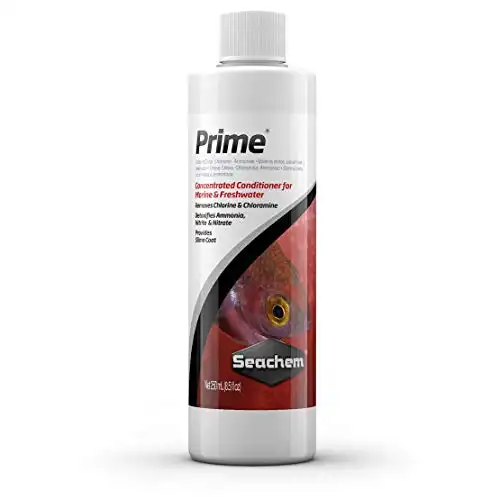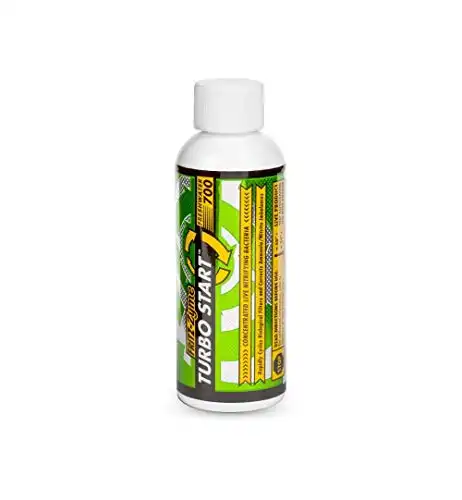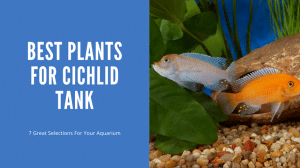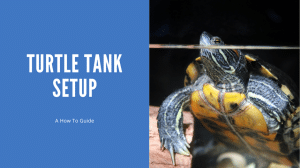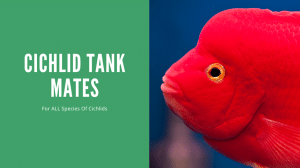Thank you for visiting! By the way… any links on this page that lead to products on Amazon and other stores/partners are affiliate links Aquarium Store Depot earns a commission if you make a purchase.
New tank? Fish dying? You might have forgotten to cycle the tank. Or worse yet, you might not even know what an aquarium cycle is!
An aquarium cycle is essential for a fish tank to sustain life and thrive for years to come; a healthy cycle leads to a healthy tank. This is usually a fishless process, but having livestock present is possible under certain conditions. Fish In Cycling is not recommended for the average hobbyist, but you might find yourself in this challenging position unintentionally.
Key Takeaways
- Adding fish to a new aquarium is never recommended, but you should know what to do in case it happens to you.
- Fish-in cycles are dangerous due to ammonia, nitrite, and nitrate that are left unprocessed because beneficial bacteria aren’t present in the aquarium yet.
- Regularly testing water parameters, daily water changes, limited feedings, adding fish slowly, adding plants, and dosing bacteria can all help in reducing the negative effects of a fish-in cycle.
The Aquarium Cycle
The aquarium nitrogen cycle is a complicated process in which bacteria grow and populate an aquatic system to sustain life. Bacteria take toxic ammonia and nitrite levels and convert them into safer nitrates. Cycling an aquarium without fish can take up to 6 weeks, but is usually finished between 2 to 4.
The main reason why hobbyists wait to add fish until after the nitrogen cycle is because fish create a large amount of ammonia through waste and respiration. This becomes a problem as the population of bacteria in a new aquarium can’t keep up with the demand. As a result, ammonia levels spike, followed by nitrite levels, and eventually nitrates. This can lead to water parameters literally off the charts!
Even when an aquarium is freshly cycled, most hobbyists wait several weeks or months for the tank to reach stability, only adding a couple of fish here and there. This ensures that the bacteria populations grow alongside the increasing influx of ammonia.
Reasons Why It Isn’t the Best Practice
While fish-in cycling is generally looked down upon in the aquarium hobby, it can sometimes be an honest mistake. Unfortunately, many new hobbyists are eager to start their tanks and rely on only one source of information or don’t do any research at all!
If the only source of information is an employee at a local pet store, then the information might be incorrect or outdated. This is especially true if the employee works based on commission, where they are especially eager to sell the new hobbyists as much as they can, including a bag full of fish. Lack of research can also lead to impulsive buys and sudden fish deaths.
Are there any benefits to fish-in cycling?
No, there aren’t any benefits to fish-in cycling. An aquarium can only complete the nitrogen cycle with time and other methods won’t make a bacteria population grow any faster.
If you’ve already started fish-in cycling though, then you’ll want to be prepared for the next steps.
How To Successfully Pull Off Fish In Cycling (In 7 Steps)
Remember, it’s not recommended to do fish-in cycling for your aquarium, but it’s best to be prepared if you find yourself in this situation.
Here is how to handle an uncycled tank safely that already has fish in it!
1. Test Water Parameters
The most important aspect of any aquarium cycling is testing water parameters, even more so for fish-in cycling as fish can easily be affected by unsuitable conditions. In a fishless cycle, water parameters can largely be left uncontrolled, but fish need stability and nontoxic conditions.
While there are no acceptable ammonia and nitrite levels for fish, it’s best to keep both under 1.0 ppm to keep fish safe; this should be enough to keep the nitrogen cycle going while making more tolerable conditions for your fish.
Best Aquarium Test Kit For Freshwater
With all the essentials and accurate testing, this test kit is the best one to get you started
Along with ammonia and nitrite, nitrate levels should also be tested daily. Nitrate might take longer to appear in the aquarium as it’s one of the last compounds created by the nitrogen cycle. In general, nitrate levels can reach moderately high levels before they become toxic to fish, but a water change will be needed to reduce levels once past 20.0 to 40.0 ppm.
Another crucial water parameter to test is pH. Water’s pH can be difficult to control, and it’s usually best to leave it untouched. However, if your tank is experiencing daily swings of 0.5 to 1.0, then some moderation will be needed.
2. Water Changes
More than likely, you will need to do many water changes between the time of the first fish being added and several weeks after the cycle has officially finished. Water changes are the best way of having an immediate effect on water parameters, so long as the source water is reliable.
Depending on what your testing kit reads, you may need to do water changes once or twice a day until the parameters stabilize. How often a water change is needed will depend mostly on ammonia and nitrite levels, but nitrate can also become deadly at high levels and under extended exposure.
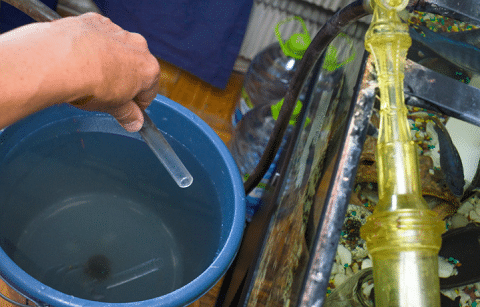
If you find your aquarium has nitrite or ammonia levels above 1.0 to 2.0 ppm, then a water change is needed. However, a large water change can also stress out fish and disrupt beneficial bacteria even more than they already are. Because of this, it’s recommended to do smaller, more consistent water changes.
In general, one or two 25% water changes throughout the day will help keep levels manageable, though this will be different with every fish tank. If ammonia, nitrite, or nitrate levels skyrocket, then it may be necessary to complete a near-100% water change.
Keep in mind that bacteria mostly colonize filter media and don’t live in the water column, so replacing the water is safe as long as the source water is safe.
3. Source Water
Understanding your source water is important for all stages of your fish tank’s life. Whether you decide to use tap water, distilled water, RO water, or RO/DI water, you should always know its baseline parameters.
Unfortunately, many tap water options contain ammonia as a byproduct of chloramine treatment. Products like Seachem Prime can help detoxify harmful compounds. Increasing or lowering pH may also be necessary depending on the origin of the tap water.
Seachem prime is a easy to use and affordable choice when it comes to remove chlorine and chloramines from your tap water. Highly recommended!
4. Add Fish Slowly
The worst thing you can do for any new tank is add too many fish too quickly. Adding a lot of fish at once causes ammonia spikes due to the additional bioload and the bacteria’s inability to process increased amounts.
Adding a few hardy fish that can withstand less than ideal aquarium conditions is also a good way to give your tank a better chance of surviving its first few weeks. If able, add new fish the second day after the tank is set up. This will allow for some parameters, like water temperature, to stabilize. Even then, it is likely you will lose a few fish.
If you’ve already added all the fish you’re ever going to get into a brand new, day-one, uncycled tank, then you will want to test water parameters daily–if not several times a day–and follow the other protocols on this list.
5. Feeding
Another way to make the cycling process safer is by limiting feeding. During this time, fish will naturally be stressed and won’t need to eat as often as they usually do. Limiting the amount and frequency of feeding also has a few other benefits to keeping toxic levels down.
In any established tank, overfeeding can cause ammonia or nitrite to spike. This is because uneaten food breaks down like any other organic in the aquarium, causing it to contribute to ammonia, nitrite, and nitrate levels. This is also why leftover food should be removed from the tank within 5 minutes of being offered. To help prevent overfeeding and increasing waste load, only a flake or two should be offered at any given time.
Even though your fish might ask you for food, most aquarium species are hardy fish that can easily go several days without feeding. For an uncycled aquarium, it’s recommended to only feed one small portion every other day. This will also naturally decrease the amount of waste entering the system as less fish food is being processed.
6. Add Plants
Aquatic plants benefit any freshwater system, but they’re especially helpful when trying to keep toxic compounds out of an uncycled tank. The main reasons for having a planted tank include processing waste, increasing oxygen levels, and introducing pre-established beneficial bacteria colonies.
In order to grow, plants process nutrients from the water column and the substrate. These essential nutrients just so happen to be nitrate and some parts of ammonia and nitrite. Plants can be used to decrease the impact of ammonia buildup, though how much will depend on how many plants are added. There are also some plants that are more suited for nutrient reduction, such as Azolla, Hornwort, and Watersprite
A planted aquarium will also have more available oxygen than one without plants. In addition to nutrients, live plants also require carbon dioxide to complete photosynthesis. Oxygen is a byproduct of this process and is introduced into the water column. Additional oxygen is crucial for fish experiencing ammonia or nitrite poisoning as those compounds can start to burn the gills and affect breathing ability.
Lastly, adding plants will help transfer some beneficial bacteria from one cycled aquarium to an uncycled one via plants. Many bacteria will be lost in the transfer, but some should be able to be established in the new uncycled tank. This should help increase beneficial bacterial growth and population.
7. Add Beneficial Bacteria
Bottled beneficial bacteria is a relatively new product available at most local fish stores. Often, these products are advertised as being able to instantly cycle an aquarium, making conditions safe for the immediate addition of fish. While bottled bacteria should help introduce bacteria into the aquarium, it doesn’t guarantee that they’ll actually grow.
Fritz Turbo Start is known in the industry as the fastest acting nitrifying bacteria you can purchase. This 700 version is specialized for freshwater tank and has my highest recommendation
The idea behind bottled beneficial bacteria is that you’re instantly introducing a colony of bacteria that can process fish waste and other contaminants1. This doesn’t mean that you’re skipping the nitrogen cycle, but rather that you’re facilitating the bacterial growth necessary to complete it.
For some tanks, this works. But for others, it’s a false promise. While it won’t hurt your aquarium to dose beneficial bacteria during the cycling process, continue to follow the other recommendations on this list for extra security.
Other Tips And Tricks
The best way to safely make it through having fish in an uncycled tank is by monitoring it and making changes gradually. Remember that making big changes on top of already stressful conditions will only make things worse.
A few tips to getting through an uncycled fish tank emergency, on top of the other methods on this list, include: adding filter media from another cycled aquarium and asking your local fish if they’ll hold your fish for you.
As mentioned before, most of the bacteria that live in an aquarium grow within the filter cartridge and media. The easiest way to introduce, and sometimes even complete aquarium cycling, is by transplanting media from an already-established tank to the new one.
Some hobbyists also transfer ‘aquarium gunk’, which is the sludge-like organic matter often at the bottom of the tank or filter, which is teeming with biodiversity and bacteria. This transfer will effectively allow beneficial bacteria to continue processing the new tank just as it was in the previous one.
If everything on this list fails and your new fish are gasping for air, then it might not be too late to ask your local fish store or a fellow hobbyist for help. Many aquarium stores are willing to help out their patrons in regards to quarantining a few fish. They may provide a space for fish to stay while the aquarium cycling continues. If not, a fellow hobbyist may also have the means to make accommodations.
FAQS
What does a fish-in cycle mean?
A fish-in cycle means that fish are present in the tank during the initial nitrogen cycle. This is often a fishless process as fish depend on beneficial bacteria to make the aquarium safe; fish produce toxic ammonia, nitrite, and nitrate that need to be processed by bacteria for safe conditions.
Fish-in cycles were once a popular method due to a lack of research and bad information. Information about the aquarium industry and husbandry was difficult to come by, and many store employees were–and still are–uneducated about the true process.
How long should a fish-in cycle take?
A fish-in cycle can take a week but it can also take two months. How long your tank takes to cycle will depend on how quickly your bacteria can grow, which varies from tank to tank.
A fish-in cycle should be fast but as thorough as possible; while you want conditions to be safe as soon as possible, you also want to give your bacteria time to grow and colonize the aquarium for future stability.
In general, a fish-in cycle can become a ‘ghost’ cycle in as little as a week, especially if it is a heavily planted aquarium. A ghost cycle is when the nitrogen cycle is happening in the aquarium, but goes undetected due to ammonia, nitrite, and nitrate being processed faster than can be tested. As mentioned above, plants take up nutrients, decreasing their presence in the tank water. This can make it seem like it’s a fully cycled tank, but the process is still happening.
Can I add fish during cycling?
It is not recommended to add fish during a cycle, but you might find yourself in this scenario. Check water parameters, change water as necessary, add only a few fish at a time or stop entirely, make feeding adjustments, add plants, and dose bottled bacteria.
Which fish are best for cycling?
If you must add fish to a new tank, then it’s best to add extremely hardy species, like danios, guppies, and platys.
Should I do water changes during a fish-in cycle?
Yes! Water changes are the best way to keep parameters in check at any stage of a new tank. Especially in a fish-in cycle, testing water parameters and performing water changes as necessary to keep ammonia, nitrite, and nitrate levels down may just be what keeps your fish alive.
Final Thoughts
It is never recommended to add fish to a completely new tank, but you might not have known or were given bad information. Luckily, there are a few ways to mitigate the harsh effects of ammonia, nitrite, and nitrate created by more fish waste and respiration. Some of these methods include water changes, limited feeding, and dosing bottled bacteria. If all else fails, you may ask your local fish store or a fellow hobbyist to hold your fish while the cycle continues.
- About the Author
- Latest Posts
I’m thrilled that you found Aquarium Store Depot! Here you’ll find information on fish, aquariums, and all things aquatics related. I’m a hobbyist (being doing this since I was 11) and here to help other hobbyists thrive with their aquariums! I adhere to a high quality Editorial Process and Review products with real life field usage and practical analysis.



